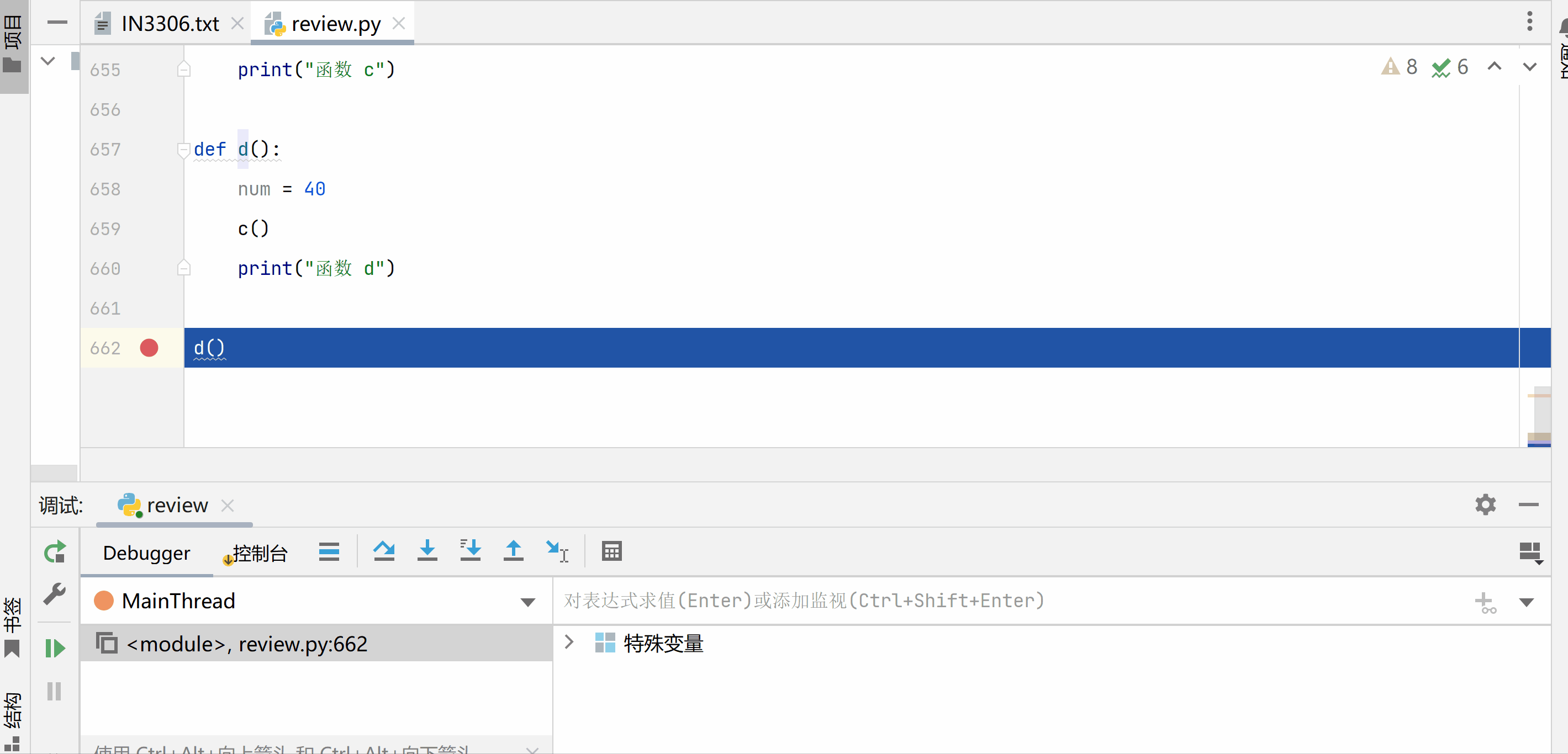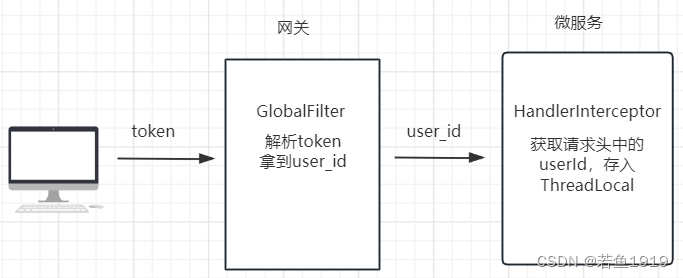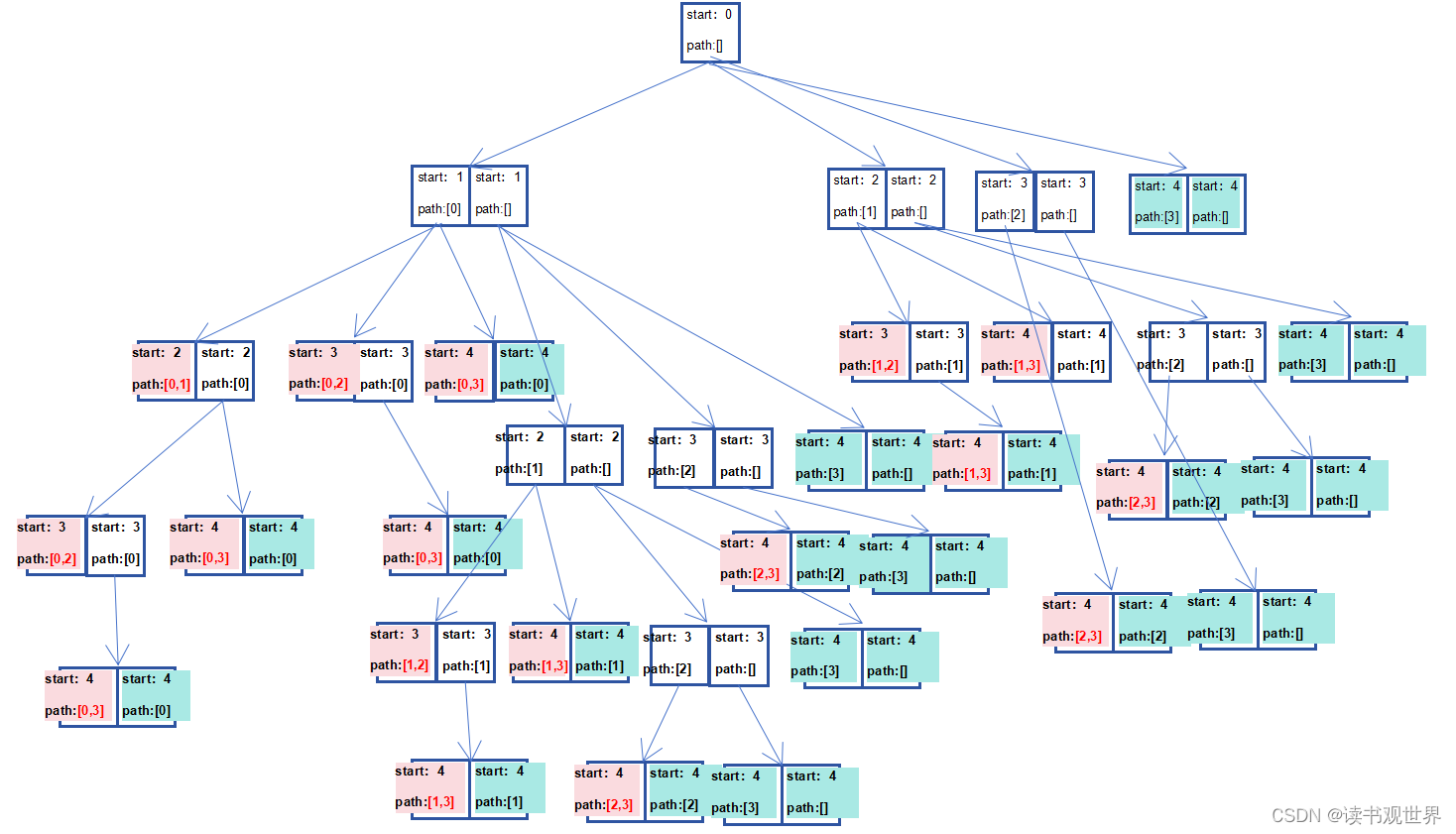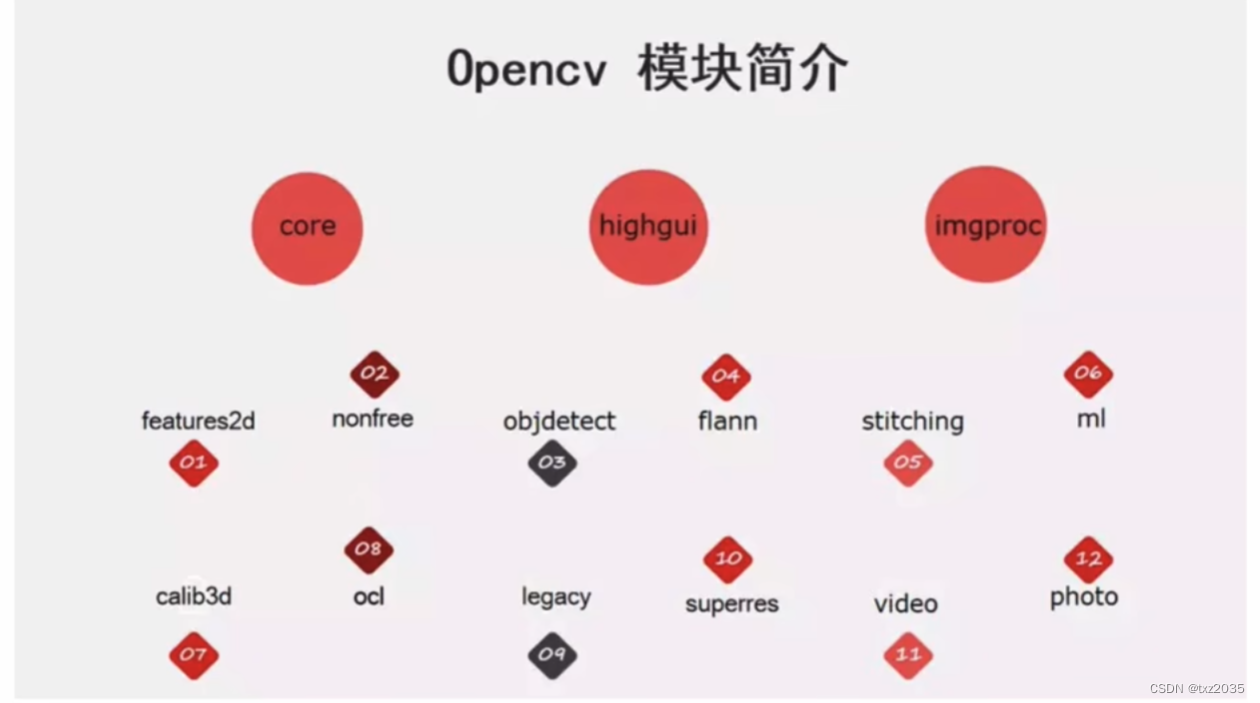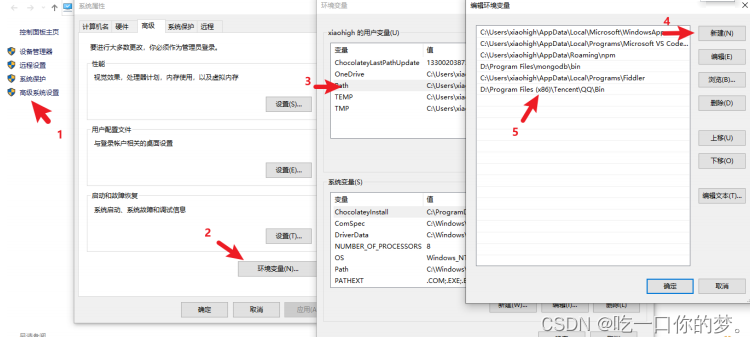2023年的深度学习入门指南(26) - 在自己电脑上运行通义千问7b模型
通过量化,通义千问4位量化的模型大小为5.86G,可以在3060等小于16G的家用GPU上也可以运行起来。
通义千问7b的量化运行
通义千问7b提供了4位量化好的Qwen/Qwen-7B-Chat-Int4模型,我们直接调用就好。
首先安装依赖包:
pip install transformers==4.32.0
pip install accelerate
pip install tiktoken
pip install einops
pip install transformers_stream_generator==0.0.4
pip install scipy
pip install auto-gptq optimum
如果你是Linux环境的话,可以安装下Flash-Attention来加速:
git clone -b v1.0.8 https://github.com/Dao-AILab/flash-attention
cd flash-attention && pip install .
Windows下暂时还用不了,这个不是必选步骤。
下面我们就可以来写代码调用通义千问7b了:
from transformers import AutoTokenizer, AutoModelForCausalLM
# Note: The default behavior now has injection attack prevention off.
tokenizer = AutoTokenizer.from_pretrained("Qwen/Qwen-7B-Chat-Int4", trust_remote_code=True)
model = AutoModelForCausalLM.from_pretrained(
"Qwen/Qwen-7B-Chat-Int4",
device_map="auto",
trust_remote_code=True
).eval()
response, history = model.chat(tokenizer, "生成用C++将字符串倒序的代码", history=None)
print(response)
生成结果如下:
以下是C++中将字符串逆序的示例代码:
#include <iostream>
#include <string>
int main() {
std::string str = "Hello, World!";
std::string reversedStr = str;
std::reverse(reversedStr.begin(), reversedStr.end());
std::cout << reversedStr << std::endl;
return 0;
}
首先,我们定义了一个包含字符串的变量 `str`。然后,我们定义了一个空字符串变量 `reversedStr`,用于存储逆序后的字符串。
接下来,我们使用 `std::reverse()` 函数将 `str` 中的字符逆序。该函数需要一个迭代器范围作为参数,表示要逆序的字符序列。在这里,我们使用 `str.begin()` 和 `str.end()` 获取字符串的起始和结束迭代器,然后将它们传递给 `std::reverse()` 函数。
最后,我们输出逆序后的字符串。
我是在3060 GPU上运行成功的。
下面我们继续讲解通义千问7B的源代码。
通义千问7b的全连接网络
除了使用了silu激活函数之外,其他就是基本的全连接网络了。
class QWenMLP(nn.Module):
def __init__(self, config):
super().__init__()
self.w1 = nn.Linear(
config.hidden_size, config.intermediate_size // 2, bias=not config.no_bias
)
self.w2 = nn.Linear(
config.hidden_size, config.intermediate_size // 2, bias=not config.no_bias
)
ff_dim_in = config.intermediate_size // 2
self.c_proj = nn.Linear(ff_dim_in, config.hidden_size, bias=not config.no_bias)
def forward(self, hidden_states):
a1 = self.w1(hidden_states)
a2 = self.w2(hidden_states)
intermediate_parallel = a1 * F.silu(a2)
output = self.c_proj(intermediate_parallel)
return output
SiLU 函数是一种神经网络中的激活函数,全称是 Sigmoid Linear Unit, 也被称为 Swish 函数。它由 Google Brain 在 2017 年提出,是一种非线性激活函数,能够有效地对神经网络的输入进行非线性变换。
SiLU 函数的定义如下:
f(x) = x * sigmoid(x)
其中,sigmoid 函数是 Sigmoid 函数,定义如下:
sigmoid(x) = 1 / (1 + exp(-x))
SiLU 函数的特点如下:
- 正数区域内,SiLU 函数的输出与 ReLU 函数的输出相同。
- 在负数区域内,SiLU 函数的输出与 sigmoid 函数的输出相同。
- SiLU 函数在整个定义域内都是可微的,这使得在反向传播过程中的梯度计算更加稳定。
- SiLU函数不是单调递增的,而是在x≈−1.28时达到全局最小值−0.28,这可以起到一个隐式正则化的作用,抑制过大的权重
Transformer块
下面我们将RMSNorm,QWenAttention和QWenMLP三者搭建成QWenBlock,就类似于LLaMA中的TransformerBlock:
class QWenBlock(nn.Module):
def __init__(self, config):
super().__init__()
hidden_size = config.hidden_size
self.bf16 = config.bf16
self.ln_1 = RMSNorm(
hidden_size,
eps=config.layer_norm_epsilon,
)
self.attn = QWenAttention(config)
self.ln_2 = RMSNorm(
hidden_size,
eps=config.layer_norm_epsilon,
)
self.mlp = QWenMLP(config)
def forward(
self,
hidden_states: Optional[Tuple[torch.FloatTensor]],
rotary_pos_emb: Optional[List[torch.Tensor]] = None,
registered_causal_mask: Optional[torch.Tensor] = None,
layer_past: Optional[Tuple[torch.Tensor]] = None,
attention_mask: Optional[torch.FloatTensor] = None,
head_mask: Optional[torch.FloatTensor] = None,
encoder_hidden_states: Optional[torch.Tensor] = None,
encoder_attention_mask: Optional[torch.FloatTensor] = None,
use_cache: Optional[bool] = False,
output_attentions: Optional[bool] = False,
):
layernorm_output = self.ln_1(hidden_states)
attn_outputs = self.attn(
layernorm_output,
rotary_pos_emb,
registered_causal_mask=registered_causal_mask,
layer_past=layer_past,
attention_mask=attention_mask,
head_mask=head_mask,
use_cache=use_cache,
output_attentions=output_attentions,
)
attn_output = attn_outputs[0]
outputs = attn_outputs[1:]
residual = hidden_states
layernorm_input = attn_output + residual
layernorm_output = self.ln_2(layernorm_input)
residual = layernorm_input
mlp_output = self.mlp(layernorm_output)
hidden_states = residual + mlp_output
if use_cache:
outputs = (hidden_states,) + outputs
else:
outputs = (hidden_states,) + outputs[1:]
return outputs
这一模块主要就是将一些参数传递给上节我们介绍过的QWenAttention:
- hidden_states:一个可选的元组,包含了上一层的输出张量,形状为(batch_size, sequence_length, hidden_size)。
- rotary_pos_emb:一个可选的列表,包含了旋转位置编码张量,形状为(batch_size, sequence_length, hidden_size)。
- registered_causal_mask:一个可选的张量,用于注册因果掩码,防止模型看到未来的信息。形状为(batch_size, sequence_length, sequence_length)。
- layer_past:一个可选的元组,包含了上一层的注意力键值对张量,用于实现缓存机制,加速生成过程。形状为(2, batch_size, num_heads, sequence_length, head_dim)。
- attention_mask:一个可选的浮点张量,用于对输入序列进行掩码,忽略无效的位置或填充部分。形状为(batch_size, sequence_length)或(batch_size, 1, 1, sequence_length)。
- head_mask:一个可选的浮点张量,用于对注意力头进行掩码,随机删除一些头以增加模型的鲁棒性。形状为(num_heads,)或(1, 1, num_heads, 1)。
- encoder_hidden_states:一个可选的张量,用于实现编码器-解码器结构时,传递编码器的输出给解码器。形状为(batch_size, encoder_sequence_length, hidden_size)。
- encoder_attention_mask:一个可选的浮点张量,用于实现编码器-解码器结构时,对编码器输出进行掩码。形状为(batch_size, encoder_sequence_length)或(batch_size, 1, 1, encoder_sequence_length)。
- use_cache:一个可选的布尔值,用于指示是否使用缓存机制。
- output_attentions:一个可选的布尔值,用于指示是否输出注意力权重张量。
RMSNorm
RMSNorm我们已经讲过多次的,这里就不多介绍了:
class RMSNorm(torch.nn.Module):
def __init__(self, dim: int, eps: float = 1e-6):
super().__init__()
self.eps = eps
self.weight = nn.Parameter(torch.ones(dim))
def _norm(self, x):
return x * torch.rsqrt(x.pow(2).mean(-1, keepdim=True) + self.eps)
def forward(self, x):
if rms_norm is not None and x.is_cuda:
return rms_norm(x, self.weight, self.eps)
else:
output = self._norm(x.float()).type_as(x)
return output * self.weight
位置编码
还记得讲百川模型代码时我们遇到的einsum吗?在千问的代码里我们会再次遇到这样的爱因斯坦风格,这次我们用到的是一个库einops。
在einops的加持下,我们可以将维度变换的操作变得更有可读性:
from einops import rearrange
emb = rearrange(emb, "n d -> 1 n 1 d")
rearrange函数可以根据字符串表达式来重新排列张量维度。
这里的"n d -> 1 n 1 d"表示:
- 从(n, d)形状
- 重新排列为(1, n, 1, d)形状
也就是在emb张量的维度1(n个向量)前面增加两维,变成1和1。
其余的还是使用cos和sin函数作cache:
class RotaryEmbedding(torch.nn.Module):
def __init__(self, dim, base=10000):
super().__init__()
self.dim = dim
self.base = base
self.inv_freq = 1.0 / (base ** (torch.arange(0, dim, 2).float() / dim))
if importlib.util.find_spec("einops") is None:
raise RuntimeError("einops is required for Rotary Embedding")
self._rotary_pos_emb_cache = None
self._seq_len_cached = 0
self._ntk_alpha_cached = 1.0
def update_rotary_pos_emb_cache(self, max_seq_len, offset=0, ntk_alpha=1.0):
seqlen = max_seq_len + offset
if seqlen > self._seq_len_cached or ntk_alpha != self._ntk_alpha_cached:
base = self.base * ntk_alpha ** (self.dim / (self.dim - 2))
self.inv_freq = 1.0 / (
base
** (
torch.arange(0, self.dim, 2, device=self.inv_freq.device).float()
/ self.dim
)
)
self._seq_len_cached = max(2 * seqlen, 16)
self._ntk_alpha_cached = ntk_alpha
seq = torch.arange(self._seq_len_cached, device=self.inv_freq.device)
freqs = torch.outer(seq.type_as(self.inv_freq), self.inv_freq)
emb = torch.cat((freqs, freqs), dim=-1)
from einops import rearrange
emb = rearrange(emb, "n d -> 1 n 1 d")
cos, sin = emb.cos(), emb.sin()
self._rotary_pos_emb_cache = [cos, sin]
def forward(self, max_seq_len, offset=0, ntk_alpha=1.0):
self.update_rotary_pos_emb_cache(max_seq_len, offset, ntk_alpha)
cos, sin = self._rotary_pos_emb_cache
return [cos[:, offset : offset + max_seq_len], sin[:, offset : offset + max_seq_len]]
千问7B的旋转函数也是用einops.rearrange来实现的:
def _rotate_half(x):
from einops import rearrange
x = rearrange(x, "... (j d) -> ... j d", j=2)
x1, x2 = x.unbind(dim=-2)
return torch.cat((-x2, x1), dim=-1)
最后是apply_rotary_pos_emb函数,作用是将旋转位置编码应用到输入张量t上。
def apply_rotary_pos_emb(t, freqs):
cos, sin = freqs
if apply_rotary_emb_func is not None and t.is_cuda:
t_ = t.float()
cos = cos.squeeze(0).squeeze(1)[:, : cos.shape[-1] // 2]
sin = sin.squeeze(0).squeeze(1)[:, : sin.shape[-1] // 2]
output = apply_rotary_emb_func(t_, cos, sin).type_as(t)
return output
else:
rot_dim = freqs[0].shape[-1]
cos, sin = freqs
t_, t_pass_ = t[..., :rot_dim], t[..., rot_dim:]
t_ = t_.float()
t_pass_ = t_pass_.float()
t_ = (t_ * cos) + (_rotate_half(t_) * sin)
return torch.cat((t_, t_pass_), dim=-1).type_as(t)
apply_rotary_pos_emb的主要步骤:
- 从freqs中分离出cos和sin编码。
- 如果CUDA环境且有apply_rotary_emb_func实现,直接调用该函数进行优化的旋转编码。
- 否则,手动实现旋转编码:
- 将t切分为要编码部分t_和不编码部分t_pass_。
- 计算旋转编码后的t_。
- 将编码后的t_和未编码的t_pass_拼接。
- 返回拼接后的结果。
这样,当有优化实现时直接调用,否则用Python实现旋转位置编码。
旋转位置编码的作用是让模型表征更具局部性,使自注意力更聚焦在关键区域。这通常能提升长序列建模的性能。
通义千问的Transformer模型

class QWenModel(QWenPreTrainedModel):
_keys_to_ignore_on_load_missing = ["attn.masked_bias"]
def __init__(self, config):
super().__init__(config)
self.vocab_size = config.vocab_size
self.num_hidden_layers = config.num_hidden_layers
self.embed_dim = config.hidden_size
self.gradient_checkpointing = False
self.use_dynamic_ntk = config.use_dynamic_ntk
self.seq_length = config.seq_length
self.wte = nn.Embedding(self.vocab_size, self.embed_dim)
self.drop = nn.Dropout(config.emb_dropout_prob)
if config.rotary_pct == 1.0:
self.rotary_ndims = None
else:
assert config.rotary_pct < 1
self.rotary_ndims = int(
config.kv_channels * config.rotary_pct
)
dim = (
self.rotary_ndims
if self.rotary_ndims is not None
else config.kv_channels
)
self.rotary_emb = RotaryEmbedding(dim, base=config.rotary_emb_base)
self.use_flash_attn = config.use_flash_attn
self.is_fp32 = not (config.bf16 or config.fp16)
if (
self.use_flash_attn
and flash_attn_unpadded_func is not None
and not self.is_fp32
):
self.registered_causal_mask = None
else:
max_positions = config.max_position_embeddings
self.register_buffer(
"registered_causal_mask",
torch.tril(
torch.ones((max_positions, max_positions), dtype=torch.bool)
).view(1, 1, max_positions, max_positions),
persistent=False,
)
self.h = nn.ModuleList(
[
QWenBlock(
config
)
for i in range(config.num_hidden_layers)
]
)
self.ln_f = RMSNorm(
self.embed_dim,
eps=config.layer_norm_epsilon,
)
self.post_init()
初始化的部分还是将之前介绍过的各模块组合在一起。
下面是虽然大但是主要是例行公事和错误判断的forward:
def forward(
self,
input_ids: Optional[torch.LongTensor] = None,
past_key_values: Optional[Tuple[Tuple[torch.Tensor]]] = None,
attention_mask: Optional[torch.FloatTensor] = None,
token_type_ids: Optional[torch.LongTensor] = None,
position_ids: Optional[torch.LongTensor] = None,
head_mask: Optional[torch.FloatTensor] = None,
inputs_embeds: Optional[torch.FloatTensor] = None,
encoder_hidden_states: Optional[torch.Tensor] = None,
encoder_attention_mask: Optional[torch.FloatTensor] = None,
use_cache: Optional[bool] = None,
output_attentions: Optional[bool] = None,
output_hidden_states: Optional[bool] = None,
return_dict: Optional[bool] = None,
):
output_attentions = (
output_attentions
if output_attentions is not None
else self.config.output_attentions
)
output_hidden_states = (
output_hidden_states
if output_hidden_states is not None
else self.config.output_hidden_states
)
use_cache = use_cache if use_cache is not None else self.config.use_cache
return_dict = (
return_dict if return_dict is not None else self.config.use_return_dict
)
if input_ids is not None and inputs_embeds is not None:
raise ValueError(
"You cannot specify both input_ids and inputs_embeds at the same time"
)
elif input_ids is not None:
input_shape = input_ids.size()
input_ids = input_ids.view(-1, input_shape[-1])
batch_size = input_ids.shape[0]
elif inputs_embeds is not None:
input_shape = inputs_embeds.size()[:-1]
batch_size = inputs_embeds.shape[0]
else:
raise ValueError("You have to specify either input_ids or inputs_embeds")
device = input_ids.device if input_ids is not None else inputs_embeds.device
if token_type_ids is not None:
token_type_ids = token_type_ids.view(-1, input_shape[-1])
if position_ids is not None:
position_ids = position_ids.view(-1, input_shape[-1])
if past_key_values is None:
past_length = 0
past_key_values = tuple([None] * len(self.h))
else:
past_length = past_key_values[0][0].size(-2)
if position_ids is None:
position_ids = torch.arange(
past_length,
input_shape[-1] + past_length,
dtype=torch.long,
device=device,
)
position_ids = position_ids.unsqueeze(0).view(-1, input_shape[-1])
if attention_mask is not None:
if batch_size <= 0:
raise ValueError("batch_size has to be defined and > 0")
attention_mask = attention_mask.view(batch_size, -1)
attention_mask = attention_mask[:, None, None, :]
attention_mask = attention_mask.to(dtype=self.dtype)
attention_mask = (1.0 - attention_mask) * torch.finfo(self.dtype).min
encoder_attention_mask = None
head_mask = self.get_head_mask(head_mask, self.config.num_hidden_layers)
if inputs_embeds is None:
inputs_embeds = self.wte(input_ids)
hidden_states = inputs_embeds
kv_seq_len = hidden_states.size()[1]
if past_key_values[0] is not None:
# past key values[0][0] shape: bs * seq_len * head_num * dim
kv_seq_len += past_key_values[0][0].shape[1]
if (
self.use_dynamic_ntk
and kv_seq_len == hidden_states.size()[1]
and not self.training
):
context_value = math.log(kv_seq_len / self.seq_length, 2) + 1
ntk_alpha = 2 ** math.ceil(context_value) - 1
ntk_alpha = max(ntk_alpha, 1)
else:
ntk_alpha = self.rotary_emb._ntk_alpha_cached
rotary_pos_emb = self.rotary_emb(kv_seq_len, ntk_alpha=ntk_alpha)
for idx in range(len(rotary_pos_emb)):
rotary_pos_emb[idx] = rotary_pos_emb[idx].to(hidden_states.device)
hidden_states = self.drop(hidden_states)
output_shape = input_shape + (hidden_states.size(-1),)
if self.gradient_checkpointing and self.training:
if use_cache:
logger.warning_once(
"`use_cache=True` is incompatible with gradient checkpointing. Setting `use_cache=False`..."
)
use_cache = False
presents = () if use_cache else None
all_self_attentions = () if output_attentions else None
all_hidden_states = () if output_hidden_states else None
for i, (block, layer_past) in enumerate(zip(self.h, past_key_values)):
if output_hidden_states:
all_hidden_states = all_hidden_states + (hidden_states,)
if self.gradient_checkpointing and self.training:
def create_custom_forward(module):
def custom_forward(*inputs):
# None for past_key_value
return module(*inputs, use_cache, output_attentions)
return custom_forward
outputs = torch.utils.checkpoint.checkpoint(
create_custom_forward(block),
hidden_states,
rotary_pos_emb,
self.registered_causal_mask,
None,
attention_mask,
head_mask[i],
encoder_hidden_states,
encoder_attention_mask,
)
else:
outputs = block(
hidden_states,
layer_past=layer_past,
rotary_pos_emb=rotary_pos_emb,
registered_causal_mask=self.registered_causal_mask,
attention_mask=attention_mask,
head_mask=head_mask[i],
encoder_hidden_states=encoder_hidden_states,
encoder_attention_mask=encoder_attention_mask,
use_cache=use_cache,
output_attentions=output_attentions,
)
hidden_states = outputs[0]
if use_cache is True:
presents = presents + (outputs[1],)
if output_attentions:
all_self_attentions = all_self_attentions + (outputs[2 if use_cache else 1],)
hidden_states = self.ln_f(hidden_states)
hidden_states = hidden_states.view(output_shape)
# Add last hidden state
if output_hidden_states:
all_hidden_states = all_hidden_states + (hidden_states,)
if not return_dict:
return tuple(
v for v in [hidden_states, presents, all_hidden_states] if v is not None
)
return BaseModelOutputWithPast(
last_hidden_state=hidden_states,
past_key_values=presents,
hidden_states=all_hidden_states,
attentions=all_self_attentions,
)
这实现了一个标准的Transformer编码器结构,有输入处理、Encoding块循环、输出后处理三个主要部分。使用了层规范化、多头自注意力、残差连接等机制。还支持caching、checkpoints、mask等功能。
预训练模型
下面再说一下QWenModel的基类,用于设置并行训练和保存点等信息的,继承自PreTrainedModel的类:
class QWenPreTrainedModel(PreTrainedModel):
config_class = QWenConfig
base_model_prefix = "transformer"
is_parallelizable = False
supports_gradient_checkpointing = True
_no_split_modules = ["QWenBlock"]
def __init__(self, *inputs, **kwargs):
super().__init__(*inputs, **kwargs)
def _init_weights(self, module):
"""Initialize the weights."""
if isinstance(module, nn.Linear):
module.weight.data.normal_(mean=0.0, std=self.config.initializer_range)
if module.bias is not None:
module.bias.data.zero_()
elif isinstance(module, nn.Embedding):
module.weight.data.normal_(mean=0.0, std=self.config.initializer_range)
if module.padding_idx is not None:
module.weight.data[module.padding_idx].zero_()
elif isinstance(module, RMSNorm):
module.weight.data.fill_(1.0)
for name, p in module.named_parameters():
if name == "c_proj.weight":
p.data.normal_(
mean=0.0,
std=(
self.config.initializer_range
/ math.sqrt(2 * self.config.num_hidden_layers)
),
)
def _set_gradient_checkpointing(self, module, value=False):
if isinstance(module, QWenModel):
module.gradient_checkpointing = value
语言模型封装
上面的QWenModel返回的BaseModelOutputWithPast,如果要做成语言模型的话,还要封装成CausalLMOutputWithPast。
class QWenLMHeadModel(QWenPreTrainedModel):
_keys_to_ignore_on_load_missing = [r"h\.\d+\.attn\.rotary_emb\.inv_freq"]
_keys_to_ignore_on_load_unexpected = [r"h\.\d+\.attn\.masked_bias"]
def __init__(self, config):
super().__init__(config)
assert (
config.bf16 + config.fp16 + config.fp32 <= 1
), "Only one of \"bf16\", \"fp16\", \"fp32\" can be true"
autoset_precision = config.bf16 + config.fp16 + config.fp32 == 0
if autoset_precision:
if SUPPORT_BF16:
logger.warn(
"The model is automatically converting to bf16 for faster inference. "
"If you want to disable the automatic precision, please manually add bf16/fp16/fp32=True to \"AutoModelForCausalLM.from_pretrained\"."
)
config.bf16 = True
elif SUPPORT_FP16:
logger.warn(
"The model is automatically converting to fp16 for faster inference. "
"If you want to disable the automatic precision, please manually add bf16/fp16/fp32=True to \"AutoModelForCausalLM.from_pretrained\"."
)
config.fp16 = True
else:
config.fp32 = True
if config.bf16 and SUPPORT_CUDA and not SUPPORT_BF16:
logger.warn("Your device does NOT seem to support bf16, you can switch to fp16 or fp32 by by passing fp16/fp32=True in \"AutoModelForCausalLM.from_pretrained\".")
if config.fp16 and SUPPORT_CUDA and not SUPPORT_FP16:
logger.warn("Your device does NOT support faster inference with fp16, please switch to fp32 which is likely to be faster")
if config.fp32:
if SUPPORT_BF16:
logger.warn("Your device support faster inference by passing bf16=True in \"AutoModelForCausalLM.from_pretrained\".")
elif SUPPORT_FP16:
logger.warn("Your device support faster inference by passing fp16=True in \"AutoModelForCausalLM.from_pretrained\".")
if config.use_flash_attn == "auto":
if config.bf16 or config.fp16:
logger.warn("Try importing flash-attention for faster inference...")
config.use_flash_attn = True
else:
config.use_flash_attn = False
if config.use_flash_attn and config.fp32:
logger.warn("Flash attention will be disabled because it does NOT support fp32.")
if config.use_flash_attn:
_import_flash_attn()
self.transformer = QWenModel(config)
self.lm_head = nn.Linear(config.hidden_size, config.vocab_size, bias=False)
if config.bf16:
self.transformer.bfloat16()
self.lm_head.bfloat16()
if config.fp16:
self.transformer.half()
self.lm_head.half()
self.post_init()
def get_output_embeddings(self):
return self.lm_head
def set_output_embeddings(self, new_embeddings):
self.lm_head = new_embeddings
def prepare_inputs_for_generation(
self, input_ids, past_key_values=None, inputs_embeds=None, **kwargs
):
token_type_ids = kwargs.get("token_type_ids", None)
if past_key_values:
input_ids = input_ids[:, -1].unsqueeze(-1)
if token_type_ids is not None:
token_type_ids = token_type_ids[:, -1].unsqueeze(-1)
attention_mask = kwargs.get("attention_mask", None)
position_ids = kwargs.get("position_ids", None)
if attention_mask is not None and position_ids is None:
position_ids = attention_mask.long().cumsum(-1) - 1
position_ids.masked_fill_(attention_mask == 0, 1)
if past_key_values:
position_ids = position_ids[:, -1].unsqueeze(-1)
else:
position_ids = None
if inputs_embeds is not None and past_key_values is None:
model_inputs = {"inputs_embeds": inputs_embeds}
else:
model_inputs = {"input_ids": input_ids}
model_inputs.update(
{
"past_key_values": past_key_values,
"use_cache": kwargs.get("use_cache"),
"position_ids": position_ids,
"attention_mask": attention_mask,
"token_type_ids": token_type_ids,
}
)
return model_inputs
def forward(
self,
input_ids: Optional[torch.LongTensor] = None,
past_key_values: Optional[Tuple[Tuple[torch.Tensor]]] = None,
attention_mask: Optional[torch.FloatTensor] = None,
token_type_ids: Optional[torch.LongTensor] = None,
position_ids: Optional[torch.LongTensor] = None,
head_mask: Optional[torch.FloatTensor] = None,
inputs_embeds: Optional[torch.FloatTensor] = None,
encoder_hidden_states: Optional[torch.Tensor] = None,
encoder_attention_mask: Optional[torch.FloatTensor] = None,
labels: Optional[torch.LongTensor] = None,
use_cache: Optional[bool] = None,
output_attentions: Optional[bool] = None,
output_hidden_states: Optional[bool] = None,
return_dict: Optional[bool] = None,
) -> Union[Tuple, CausalLMOutputWithPast]:
return_dict = (
return_dict if return_dict is not None else self.config.use_return_dict
)
transformer_outputs = self.transformer(
input_ids,
past_key_values=past_key_values,
attention_mask=attention_mask,
token_type_ids=token_type_ids,
position_ids=position_ids,
head_mask=head_mask,
inputs_embeds=inputs_embeds,
encoder_hidden_states=encoder_hidden_states,
encoder_attention_mask=encoder_attention_mask,
use_cache=use_cache,
output_attentions=output_attentions,
output_hidden_states=output_hidden_states,
return_dict=return_dict,
)
hidden_states = transformer_outputs[0]
lm_logits = self.lm_head(hidden_states)
loss = None
if labels is not None:
labels = labels.to(lm_logits.device)
shift_logits = lm_logits[..., :-1, :].contiguous()
shift_labels = labels[..., 1:].contiguous()
loss_fct = CrossEntropyLoss()
loss = loss_fct(
shift_logits.view(-1, shift_logits.size(-1)), shift_labels.view(-1)
)
if not return_dict:
output = (lm_logits,) + transformer_outputs[1:]
return ((loss,) + output) if loss is not None else output
return CausalLMOutputWithPast(
loss=loss,
logits=lm_logits,
past_key_values=transformer_outputs.past_key_values,
hidden_states=transformer_outputs.hidden_states,
attentions=transformer_outputs.attentions,
)
在forward之外,语言模型还需要封装一个生成函数。主要也是做一些配置,然后调用父类的生成函数:
def generate(
self,
inputs: Optional[torch.Tensor] = None,
generation_config: Optional[GenerationConfig] = None,
logits_processor: Optional[LogitsProcessorList] = None,
stopping_criteria: Optional[StoppingCriteriaList] = None,
prefix_allowed_tokens_fn: Optional[
Callable[[int, torch.Tensor], List[int]]
] = None,
synced_gpus: Optional[bool] = None,
assistant_model: Optional["PreTrainedModel"] = None,
streamer: Optional["BaseStreamer"] = None,
**kwargs,
) -> Union[GenerateOutput, torch.LongTensor]:
generation_config = generation_config if generation_config is not None else self.generation_config
# Process stop_words_ids.
stop_words_ids = kwargs.pop("stop_words_ids", None)
if stop_words_ids is None and generation_config is not None:
stop_words_ids = getattr(generation_config, "stop_words_ids", None)
if stop_words_ids is None:
stop_words_ids = getattr(generation_config, "stop_words_ids", None)
if stop_words_ids is not None:
stop_words_logits_processor = StopWordsLogitsProcessor(
stop_words_ids=stop_words_ids,
eos_token_id=generation_config.eos_token_id,
)
if logits_processor is None:
logits_processor = LogitsProcessorList([stop_words_logits_processor])
else:
logits_processor.append(stop_words_logits_processor)
return super().generate(
inputs,
generation_config=generation_config,
logits_processor=logits_processor,
stopping_criteria=stopping_criteria,
prefix_allowed_tokens_fn=prefix_allowed_tokens_fn,
synced_gpus=synced_gpus,
assistant_model=assistant_model,
streamer=streamer,
**kwargs,
)
聊天功能封装
def chat(
self,
tokenizer: PreTrainedTokenizer,
query: str,
history: Optional[HistoryType],
system: str = "You are a helpful assistant.",
append_history: bool = True,
stream: Optional[bool] = _SENTINEL,
stop_words_ids: Optional[List[List[int]]] = None,
generation_config: Optional[GenerationConfig] = None,
**kwargs,
) -> Tuple[str, HistoryType]:
generation_config = generation_config if generation_config is not None else self.generation_config
assert stream is _SENTINEL, _ERROR_STREAM_IN_CHAT
assert generation_config.chat_format == 'chatml', _ERROR_BAD_CHAT_FORMAT
if history is None:
history = []
if stop_words_ids is None:
stop_words_ids = []
max_window_size = kwargs.get('max_window_size', None)
if max_window_size is None:
max_window_size = generation_config.max_window_size
raw_text, context_tokens = make_context(
tokenizer,
query,
history=history,
system=system,
max_window_size=max_window_size,
chat_format=generation_config.chat_format,
)
stop_words_ids.extend(get_stop_words_ids(
generation_config.chat_format, tokenizer
))
input_ids = torch.tensor([context_tokens]).to(self.device)
outputs = self.generate(
input_ids,
stop_words_ids=stop_words_ids,
return_dict_in_generate=False,
generation_config=generation_config,
**kwargs,
)
response = decode_tokens(
outputs[0],
tokenizer,
raw_text_len=len(raw_text),
context_length=len(context_tokens),
chat_format=generation_config.chat_format,
verbose=False,
errors='replace'
)
if append_history:
history.append((query, response))
return response, history
流式聊天封装
最后是封装成可以流式获取的函数。
其主要流程为:
- 和chat方法类似,先做输入query的处理,组装context。
- 计算停止词stop_words_ids。
- 将停止词集合封装成StopWordsLogitsProcessor。
- 将context转成input_ids作为模型输入。
- 关键在这里,调用generate_stream方法进行流式生成。它会逐个token地生成序列,并用yield返回每个结果。
- 在一个while循环中收集生成的token,并用decode方法转成文本。
- 通过yield关键字返回每个解码的结果。
- 最终形成一个生成器,可以不断获取模型生成的内容。
def chat_stream(
self,
tokenizer: PreTrainedTokenizer,
query: str,
history: Optional[HistoryType],
system: str = "You are a helpful assistant.",
stop_words_ids: Optional[List[List[int]]] = None,
logits_processor: Optional[LogitsProcessorList] = None,
generation_config: Optional[GenerationConfig] = None,
**kwargs,
) -> Generator[str, Any, None]:
generation_config = generation_config if generation_config is not None else self.generation_config
assert generation_config.chat_format == 'chatml', _ERROR_BAD_CHAT_FORMAT
if history is None:
history = []
if stop_words_ids is None:
stop_words_ids = []
max_window_size = kwargs.get('max_window_size', None)
if max_window_size is None:
max_window_size = generation_config.max_window_size
raw_text, context_tokens = make_context(
tokenizer,
query,
history=history,
system=system,
max_window_size=max_window_size,
chat_format=generation_config.chat_format,
)
stop_words_ids.extend(get_stop_words_ids(
generation_config.chat_format, tokenizer
))
if stop_words_ids is not None:
stop_words_logits_processor = StopWordsLogitsProcessor(
stop_words_ids=stop_words_ids,
eos_token_id=generation_config.eos_token_id,
)
if logits_processor is None:
logits_processor = LogitsProcessorList([stop_words_logits_processor])
else:
logits_processor.append(stop_words_logits_processor)
input_ids = torch.tensor([context_tokens]).to(self.device)
from transformers_stream_generator.main import NewGenerationMixin, StreamGenerationConfig
self.__class__.generate_stream = NewGenerationMixin.generate
self.__class__.sample_stream = NewGenerationMixin.sample_stream
stream_config = StreamGenerationConfig(**generation_config.to_dict(), do_stream=True)
def stream_generator():
outputs = []
for token in self.generate_stream(
input_ids,
return_dict_in_generate=False,
generation_config=stream_config,
logits_processor=logits_processor,
seed=-1,
**kwargs):
outputs.append(token.item())
yield tokenizer.decode(outputs, skip_special_tokens=True, errors='ignore')
return stream_generator()
小结
这节我们终于介绍完了千问7b的模型的代码。凡是讲源码的肯定会遇到大量细节,这些细节也未必是值得花太多精力去抠的,但是原汁原味的代码还是能更精确地表达功能的真实含义。
后面我们还会将模型实现抽象一下,做更系统化的讲解便于初学者理解。对于从业的同学,因为你们面对的就是这些细节,所以先熟悉起来吧。


